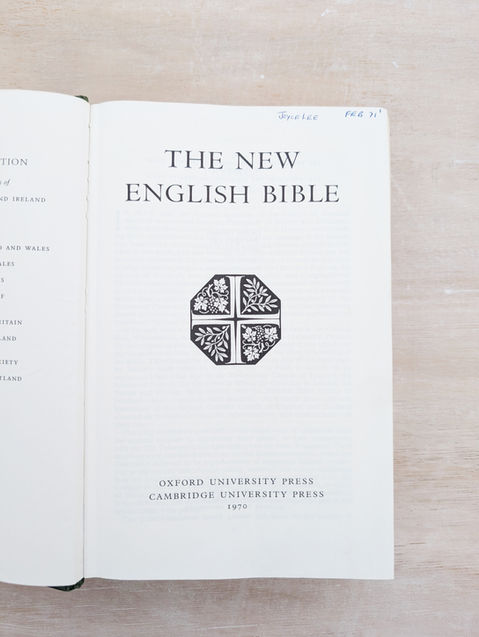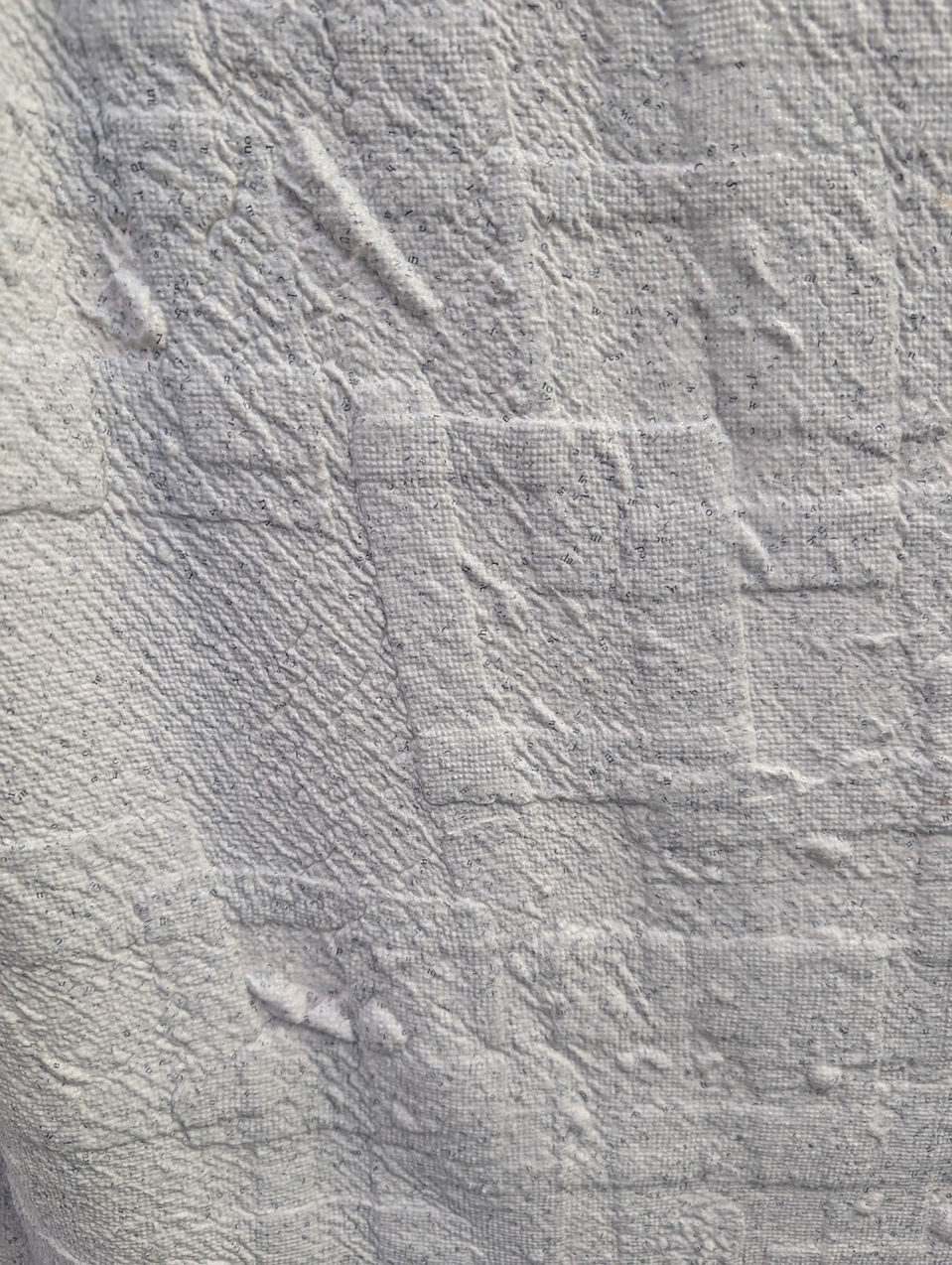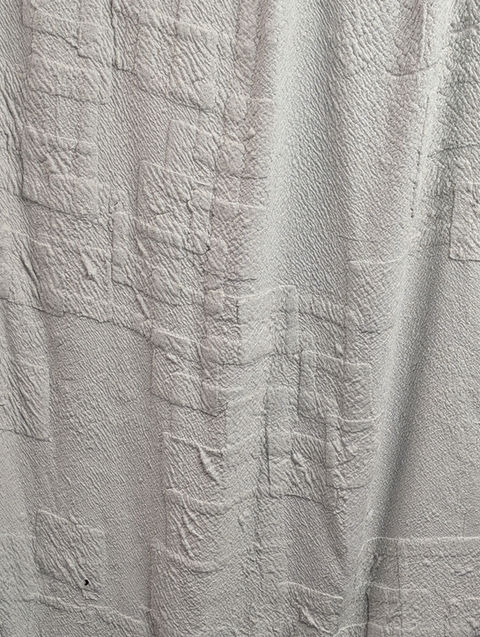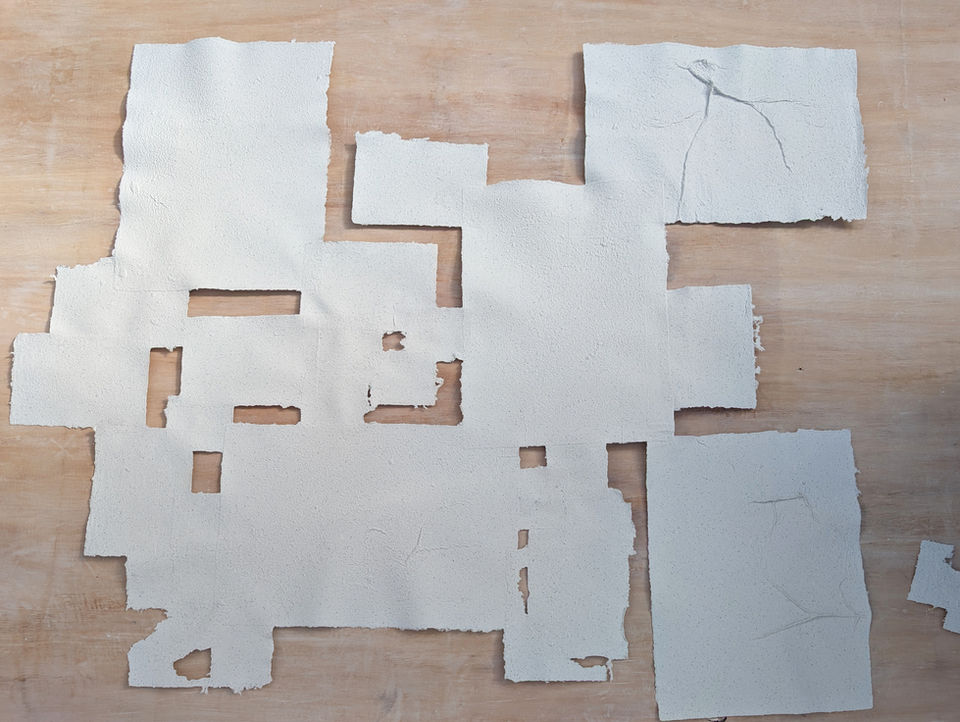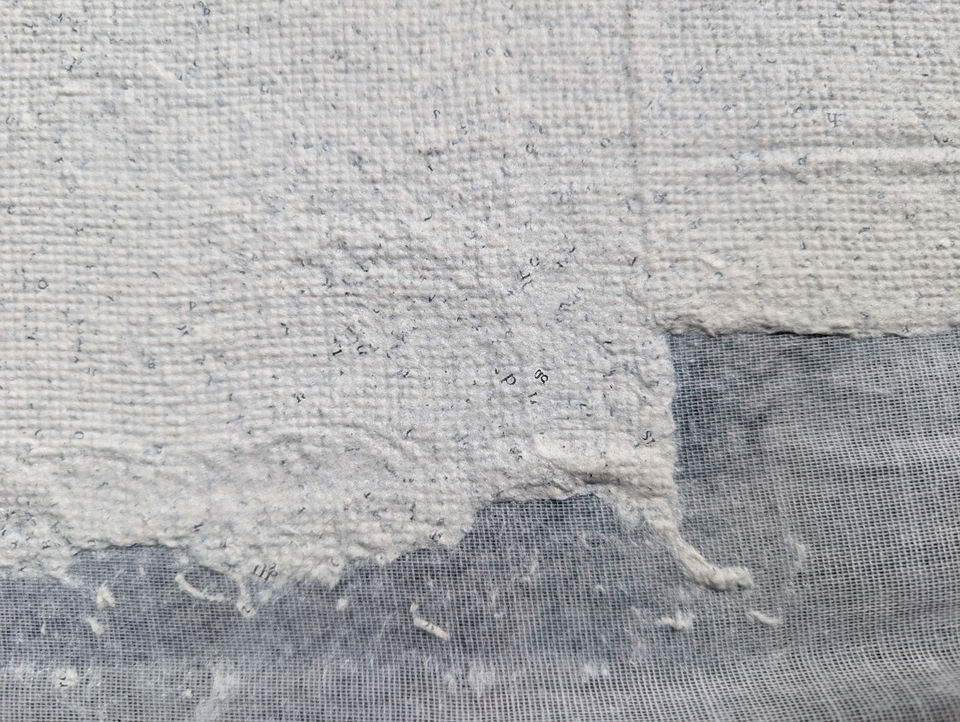The New English Bible
The New English Bible - Remnant Papers, 6''x 9''x 10'', Bible paper and rain water, Exhibition view.
The work is currently on view at the Chester Beatty Museum and Library Dublin, Manuscripts and the Mind special exhibition, 24. October 2025 - 1. March 2026.
The New English Bible - Remnant Papers is a process work that is part of a wider ongoing set of works: Holy Bible.
For each process cycle, spanning several weeks or months, a single Bible is salvaged from unsold charity shop books destined for recycling. In a continual, cyclical process of pulping, making, re-pulping, and re-making, using only rain water, the artist makes a new body of ephemeral works (embodied texts), in which temporary sculptures emerge only to be returned to the process and rhythm of making.
In each sculptural iteration, the material text takes on a different form. Working with guests invited to the studio, gestures, stories, thoughts, and conversations, all become integral parts of the transitional works.
The repetitive movements of pulling paper and the constant sound of water in motion become an accompanying liturgy.
To complete a process cycle, the carefully preserved pulp is made into sheets that the artist calls “remnant papers” and returned to a codex form. However, works might also be paused from the process to be exhibited or to continue life in the form of a photograph.
The New English Bible - Remnant Papers, as it is currently exhibited in Dublin, has been through a number of cycles of making, and has been returned to a sculptural codex form. Its earlier forms are now only preserved as photographs and memories.
Below, I have included some photographs of some of the The New English Bible's transitional sculptures, as well as a documentation of some of the process cycles. Some process cycles, especially those involving studio visitors, consisted simply of making paper and most remained undocumented. I have included some exemplary photographs for these sessions to convey the rhythm of making.


The New English Bible - Sculpture I, 4'6'' x 4'6'', wet Bible paper pulp and rain water on cloth, digital photograph.
The New English Bible - Sculpture II, 4'6'' x 4'6'', wet Bible paper pulp and rain water on cloth, digital photograph.
Sculpture as process
New English Bible is on show at the Chester Beatty Museum in Dublin as part of the Manuscripts and the Mind exhibition 24. October 2025 - 1. March 2026.
The exhibition is accompanied by a series of talks and workshops. I will host a drop-in paper making activity on 13.-14. December and a full-day paper making workshop during the closing week.
Where does text live? How do marks made in ink relate to the substrate that carries them? How do body and text become interwoven and does meaning emerge or is there a mutual indwelling or reciprocal inscription? These are just some of the many questions the work invites as it considers material textual relationships: form as paratext.
As the artist in residence and part of a multidisciplinary research team convened by the University of Glasgow, I conduct research and produce knowledge-outcomes that differ in form and nature from those produced by their academic colleagues. The artworks themselves are the new knowledge.
An eventual extraction of some category of pure form of knowledge that might be imagined to be contained by the artworks as a separable, singularly knowable entity, is not the type of engagement for which they are suited. Rather – and in this the artworks mirror the (ancient) manuscripts to which they respond – they must be encountered relationally. As objects, they can be seen, touched, held, encountered. As forms of sacred texts, they can be engaged corporately or individually in prayer, contemplation, ritual, memory, performance, wonder, and the imagination. And as forms of knowledge, they are distinguished by their multiplicity - capable of holding revelation and hiddenness in tension – without the need, or indeed the possibility, for a resolution.
Working with contemporary codices, in a continual cyclical process of pulping, making, re-pulping, and re-making, I make new paper (embodied texts) from distinct bibles and rainwater as a form of prayer. For each process cycle, spanning several weeks, a single bible is salvaged from unsold charity shop books destined for recycling. New English Bible is part of a much larger ongoing body of ephemeral works, in which temporary sculptures emerge only to be returned to the process and rhythm of making.
In each sculptural iteration, the material text takes on a different form. Working with guests invited to the studio, gestures, stories, thoughts, and conversations, all become part of the transitional works. The repetitive movements of pulling paper and the constant sound of water in motion become an accompanying liturgy.
To complete a process cycle, the carefully preserved pulp from previous cycles of sculptural making is made into sheets that the artist calls “remnant papers” and returned to a codex form. However, works might also be paused from the process to be exhibited or to continue life in the form of a photograph.
In the wider body of work, Holy Bible, each (temporarily) final work simply carries its original book title forward - Bibles are often titled according to their translation. Holy Bible expands the consideration of translation into matter, as the material form of the book undergoes translation after translation into its various temporary forms. Does form shape meaning? In its translated forms, can the sacred embodied text function as a place of prayer, revelation, divine encounter, and rest? Might such a translation of form open access to ways of encountering sacred text that are obscured by linguistic translations? Holy Bible invites its viewer to approach and hosts them as they ponder.

This publication was made possible through the support of a grant from the Templeton Religion trust. The opinions expressed in this publication are those of the authors and do not neccessarily reflect the views of Templeton religion Trust.




